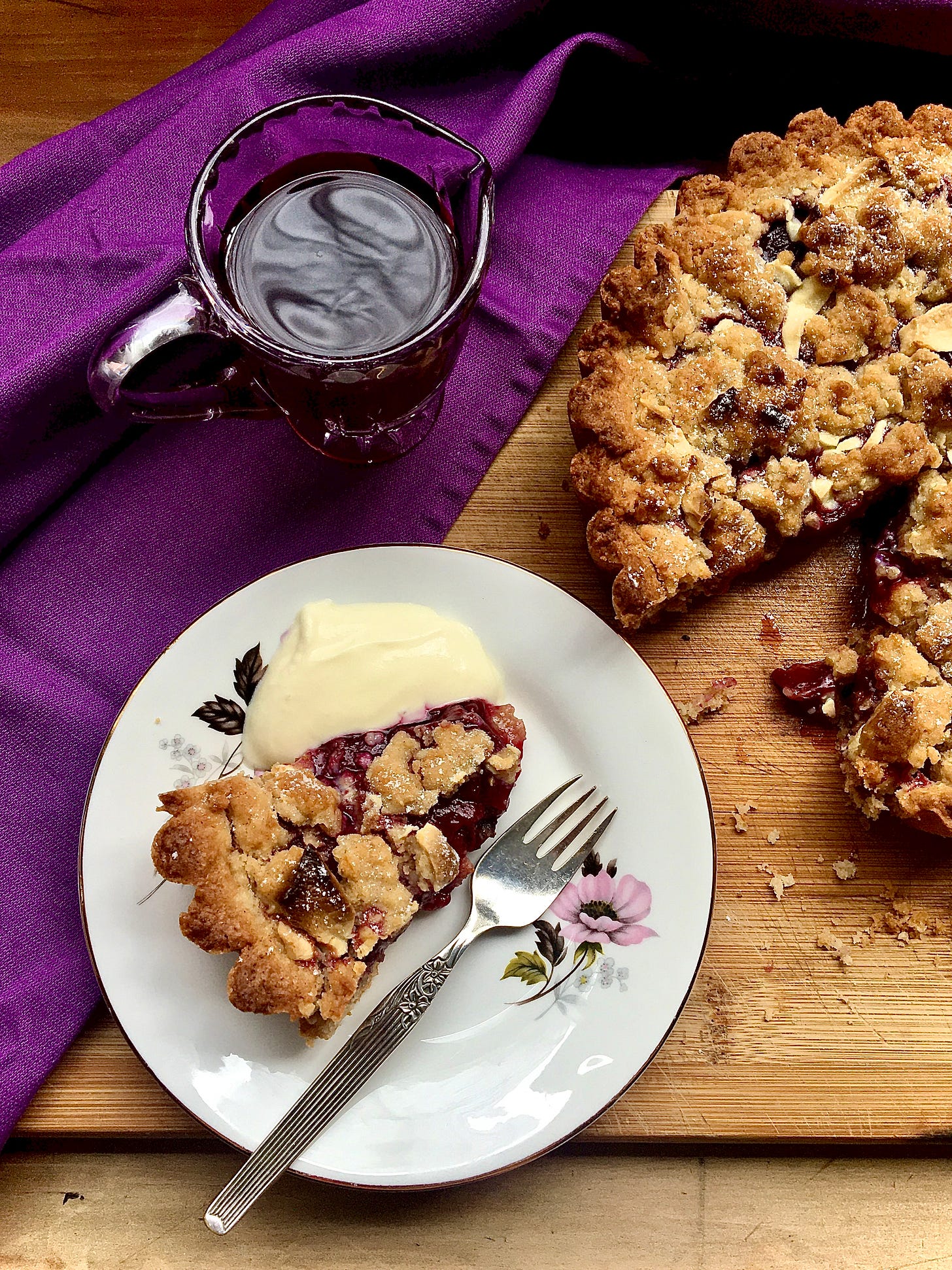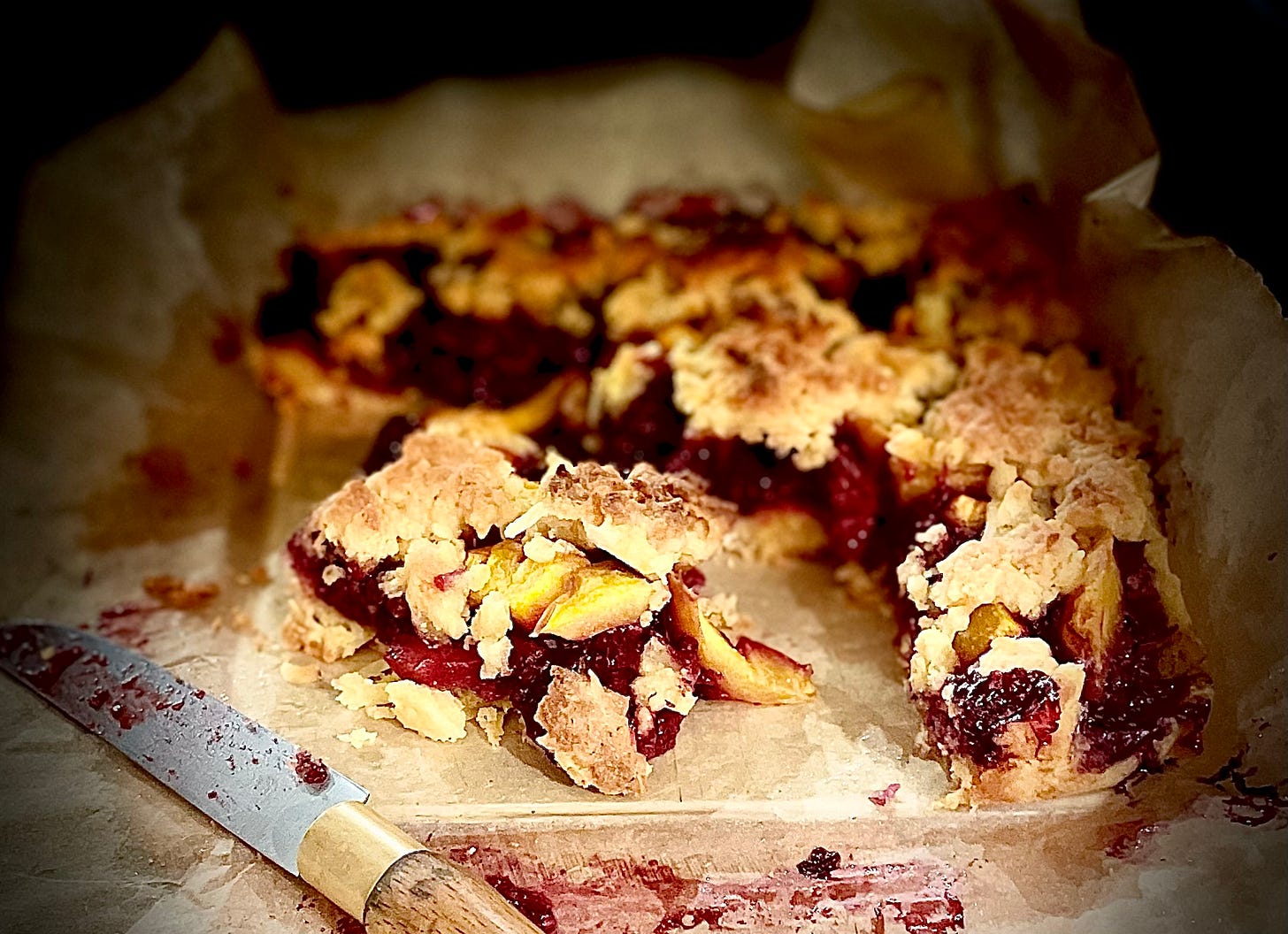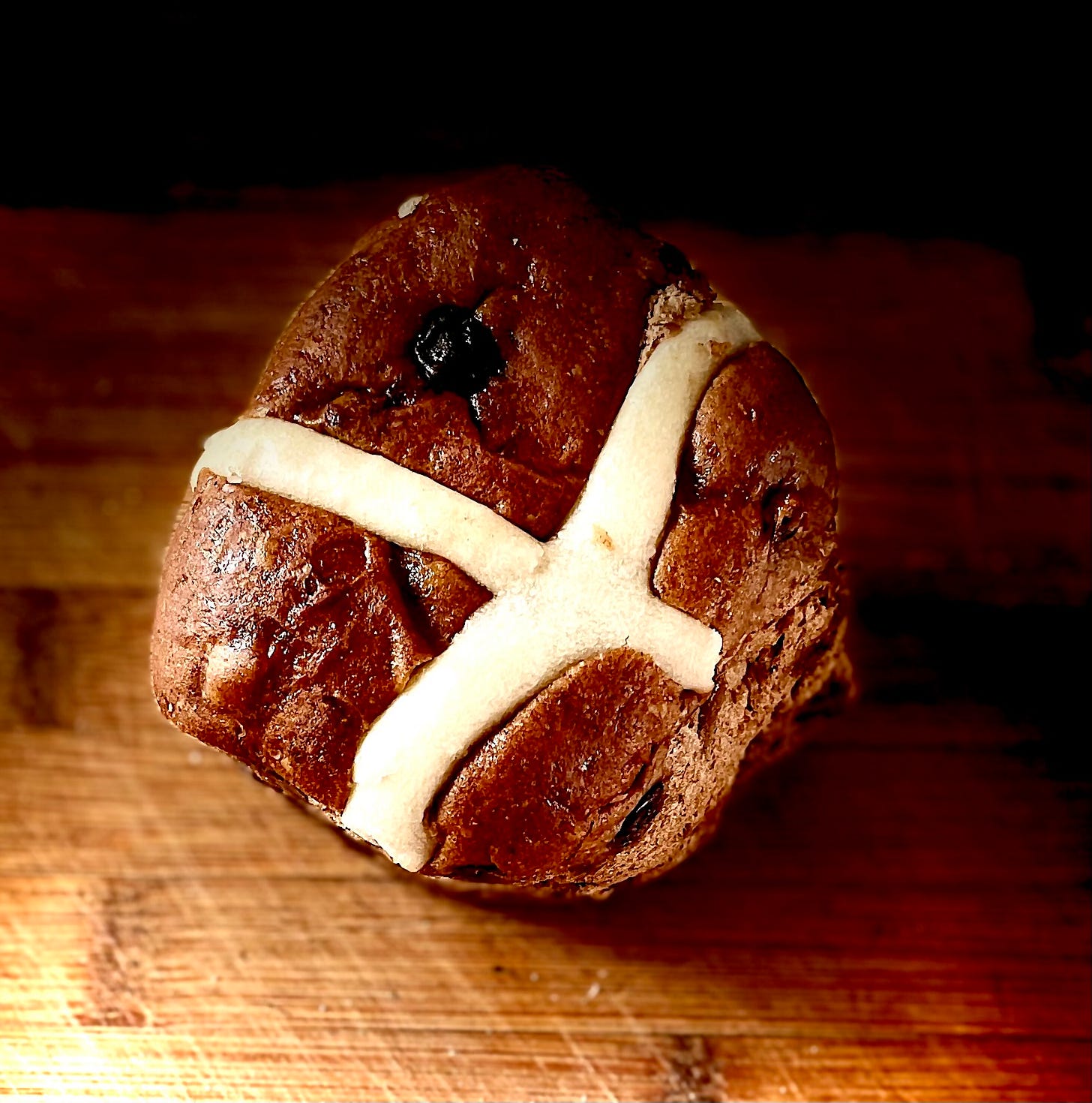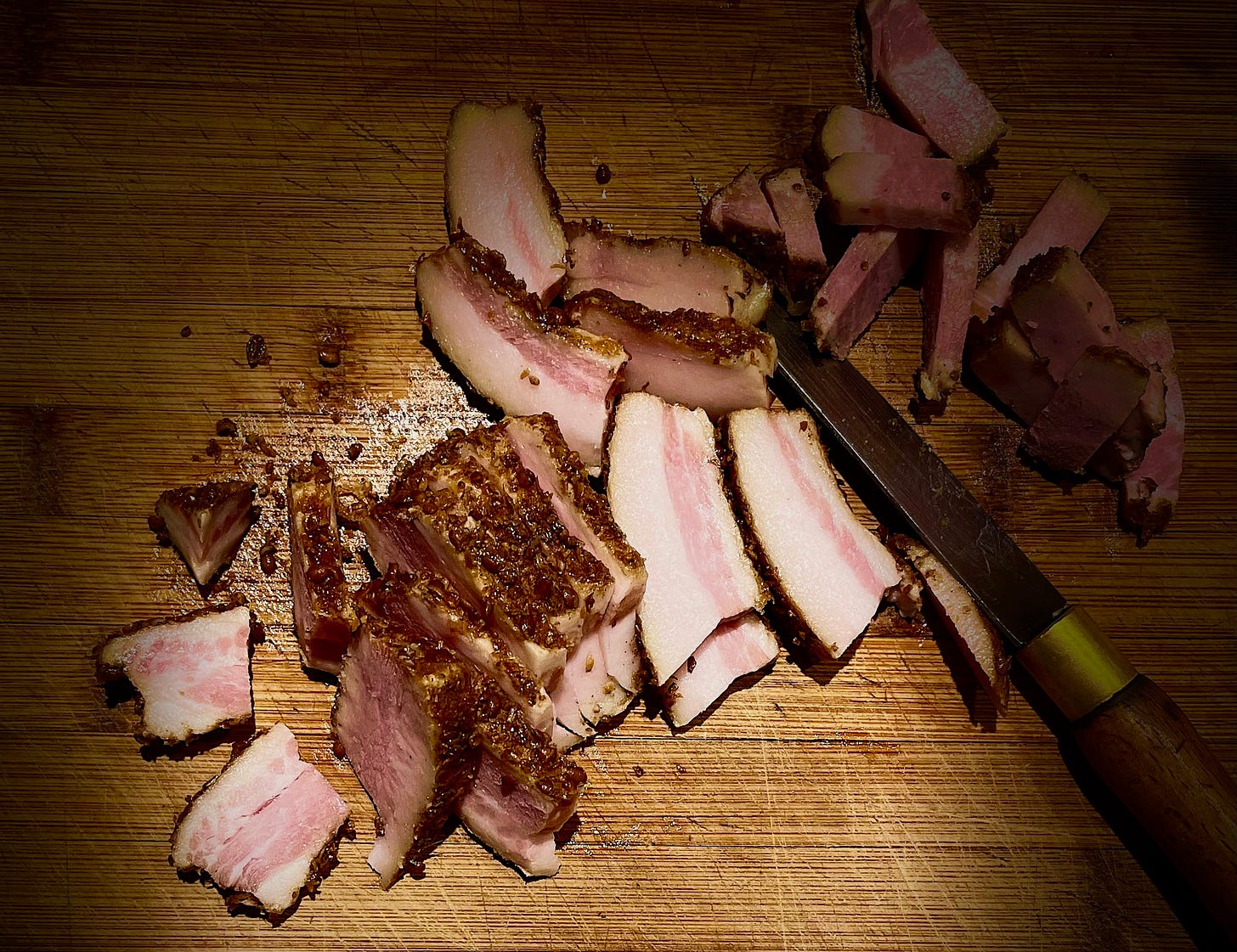Easy as pie
A treat for all reasons and seasons - and why the hype about New Zealand's best hot cross bun is justified.
Nostalgia is a powerful influence. I had something quite different planned for this week’s newsletter, but then I read this re-telling of a story I know well. In an instant I was back in a farmhouse in Provence, trying to explain to a French 10-year-old what baking powder was.
At least I didn’t have to worry about the recipe. I was trying to entertain 10-year-old Oceane by teaching her how to make what my friend Sally always called ‘Lucy’s Easy-As Pie’.
This is the first recipe I ever successfully fiddled around with. It originated from a friend of my mother’s, who I think made it with rhubarb. I swapped out some of the flour for coconut, added spices, got creative with the fruit and - well, here we are. It’s the first recipe I wrote for Wellington’s City Voice newspaper, prompting a witty sub-editor to quip that I was one of the few people on staff who “makes real dough”.
A version appears in the Feijoa section of Homecooked (people often send me photos of their feijoa crumble pies at this time of year, which I dearly love). When I made it with Oceane I seem to remember we used ground almonds because there wasn’t enough flour. I also recall having to work hard to figure out the French word for baking powder (it was back in pre-smartphone times). Neither of these things prevented her from trying to eat all the raw mixture.
It’s a very forgiving recipe. I’ve made it in all sorts of circumstances, for all sorts of people. It’s good hot or cold and it will handle just about any filling. Once, in desperate times, I used jam and banana to fill it (not refined, but delicious). Last night I made it with a peacherine, a couple of wormy apples from our tree, and most of a tin of boysenberries hidden at the top of the cupboard for emergencies.
Oceane will be in her late 20s now, which seems impossible to conceive. I hope she still has a sweet tooth and an infectious giggle.
Lucy’s Easy-As Pie
I think the secret to this pie’s success is that it contains the perfect mix of contrasting textures and flavours - sweet and tart, soft and crunchy. Have a play around with this basic version and see what you can come up with.
125g butter
½ cup sugar (any sort is fine)
1 egg
1 cup + 1-2 Tablespoons plain flour
1 cup desiccated coconut
1 tsp ground cinnamon
1 ½ tsp baking powder
¼ tsp salt
Fruit to fill the pie - about 2 cups diced or sliced cooked (or very ripe) fruit
Heat the oven to 180C. Grease a 20cm cake tin, tart tin or pie dish.
Melt the butter in a medium-sized pot set over low heat. Stir in the sugar, then remove from the heat. Let cool for five minutes, then add the egg, 1 cup flour, coconut, cinnamon, baking powder and salt. Stir together to form a dough. If it seems too soft and buttery, add the extra 1-2 tablespoons flour. Press about two-thirds of this mixture evenly into the base and sides of the prepared tin. Arrange the fruit evenly on top of the dough. Crumble the rest of the mixture on top. Bake for 30-35 minutes, until the crumble topping is light golden and dry to touch. Serve warm or at room temperature, with whipped cream, ice cream, custard or yoghurt (or a combination of all of these things).
Good Things
More good buns
I used to be all pious about not eating hot cross buns before Good Friday but this year I’ve changed my mind (life is short, after all). This is a Nada Bakery hot cross bun, which is packed with juicy fruit, well-spiced and utterly delicious. It’s probably one of the best bought buns I’ve ever eaten. If you don’t want to take my word for it, these buns also just won gold in the 2025 Great New Zealand Hot Cross Bun Competition.
Good fortune
Coming to Wellington for Easter/Anzac weekend? Don’t miss Bev Moon’s knitted yum cha show, on now at the Wellington Museum (not Te Papa, the other one). Here’s a brilliant interview with Bev Moon, who painstakingly recreated the best parts of the yum cha trolley for a moving tribute to her mother that also tells the story of the Chinese Poll Tax.
The cheek of it
Not a stunning photo, I know, but this is a stunning ingredient - locally made guanciale (cured pork cheek). This is a key ingredient in the Roman classic, spaghetti alla gricia. This is such a great fast dinner option - I follow
Roddy’s recipe here.Next week on Fancy Butter… what shall we have for Easter?







Lucy, if newsletters came scented, yours would be of warm yeast and spices. YUM! I’m going to try your pie using GF flour
Funny, as I walked past the start of the Great Feijoa Surplus gathering under our trees today, I thought I must make Lucy’s feijoa crumble pie soon 💚